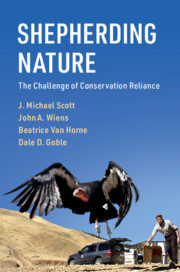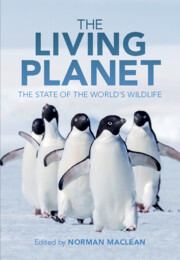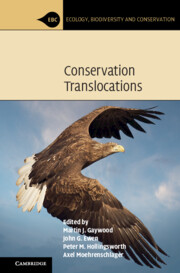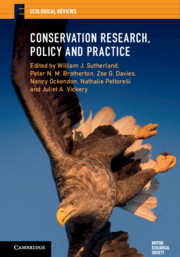Shepherding Nature
Globally, more and more species are at risk of extinction as the environment and climate change. Many of these species require long-term management to persist - they are conservation-reliant. The magnitude of this challenge requires a rethinking of how conservation priorities are determined and a broader societal commitment to conservation. Choices need to be made about which species will be conserved, for how long, and by whom. This volume uses case studies and essays by conservation practitioners from throughout the world to explore what conservation reliance is and what it means for endangered-species management. Chapters consider threats to species and how they are addressed, legal frameworks for protecting endangered species, societal contexts and conflicts over conservation goals, and how including conservation reliance can strengthen methods for prioritizing species for conservation. The book concludes by discussing how shepherding nature requires an evaluation of societal values and ethics.
- Acknowledges the validity of multiple perspectives and concerns, and the importance of including these in conservation and management activities
- Describes how legal approaches and conservation prioritizations need to change to accommodate conservation reliance
- Discusses the current and future prevalence of conservation reliance and associated costs and tradeoffs
Reviews & endorsements
'Long-term commitments and careful attention to relationships with human societies are going to be critical for the successful preservation of many species in coming decades. This book, written by leading practitioners, provides timely and expert guidance for conservation planning.' Georgina Mace, University College London
‘I’ve been working my way through Shepherding Nature, and it’s hard to imagine a better book for the topic. The authors provide some frameworks for thinking, analyzing factors that threaten (single or multiple, expected or unexpected), case studies that are each rather unique in threat, response, and outcome, connecting ecology with policy and management, and then great essays by people engaged with the cases, putting a very human face on the stories. The book has both a paradigm about how the future of species will develop (conservation reliance - what is it, how to think about it, how to engage in it) and the evidence-based case studies that show how different cases are (but thereby giving some insights in to the general questions and challenges that are common across them). It’s hard to know how much difference a book can make, but if a book can make a difference in this arena, this is the one that the authors have written. By the time I was done I realized the book didn’t rely on any ecological concepts - its approach was thoroughly evidence based. That gave me a smile.’ Dan Binkley, School of Forestry, Northern Arizona University
Product details
April 2020Paperback
9781108434331
396 pages
228 × 152 × 21 mm
0.72kg
62 b/w illus. 57 colour illus.
Available
Table of Contents
- 1. Extinction and the challenge of conservation reliance
- 2. The conservation spectrum
- 3. The genesis of conservation reliance and the language of conservation
- 4. What are the threats
- 5. Emerging threats in a rapidly changing world
- 6. The role of policy and law
- 7. What's in the conservationist's toolbox: species-centered approaches
- 8. Expanding the conservationist's toolbox: going beyond species
- 9. Conservation reliance is a human issue
- 10. Making tough decisions: prioritizing species for conservation
- 11. Being a good shepherd
- Appendices
- Author biographies
- References
- Index.









